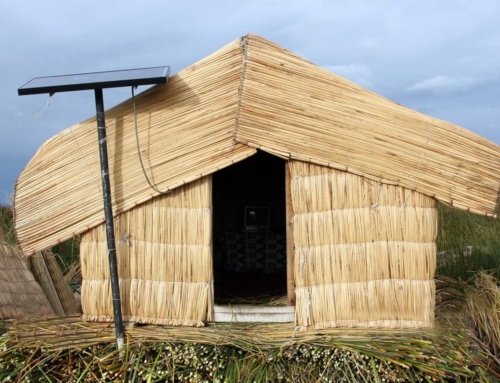Perhaps this is a cry of existential frustration, but I belong to half a dozen climate non-profits, and I’m noticing a pattern. The pattern could best be called climate atherosclerosis. A hardening of the arteries that may precede death. Or it might just be the cynicism of my old age that leads me to suggest that, like the planet, climate organizations are dying.
Three things move me toward this observation.
The first is that funding for climate organizations is faltering. It’s well known that the Sierra Club was over-extended by $40M, and its new director has laid off dozens of organizers and many more have taken early buy-outs. It’s not restricted to larger climate organizations either. Every email I get from the smaller Environment Georgia asks for money. This is tedious and results in disengagement.
Many climate organizations are non-profit 501 (c) (3)’s. Since non-profits are donation driven, that goal becomes predominant. Actions become focused on how many staff can we afford, how much money can we raise, and what projects can we run to raise money. As a result, the organizations tend to dilute their primary mission and become less effective.
In order to qualify to be a 501 (c) (3), the organization needs a board of directors and officers. Part of the responsibility of these two groups is to set the goals and the direction for the organization. Many do a fine job. Yet we can’t ignore the problem of hierarchy in climate organizations.
The layers of hierarchy and the task of fund raising lead to slow decision making and bureaucratic decisions. The climate movement is full of important goals, but it feels like we have lost our urgency to the structure of our organizations and raising money.
The second observation is that membership seems to be flagging. One Atlanta climate organization has over 400 members, but only a dozen show up for monthly meetings. Participation has died a Zoom death brought on by COVID-19. I like to say, volunteers come for the cause but stay for the people and friendship. Zoom doesn’t cultivate personal relationships and we still seem stuck in Zoom times.
The third sign is a fragmentation in demographics. Many climate organizations still suffer from “old whiteness” disease. With good reason, they are looking toward diversifying their base and their goals toward climate justice. But the way to diversify requires orgs to show up for BIPOC causes, not just recruit BIPOC members or simply hire a BIPOC leader. Today, organizations are arguing why they are good for the BIPOC community, rather than actually doing anything with them. This is not to mention, the age divide. Less than 20% of those in many organizations are under 30 years of age. Clearly climate organizations are not connecting with young Americans either. Gen Z and Millennials don’t have much time for those of us who screwed up the climate or our intuitions. There’s also a 60/40 women to men gender gap for any climate organization I belong to.
There are others reasons as well: fragmentation of causes because the climate problem is so large and overwhelming, preoccupation with policy and studies (in part to earn large donors), strong political headwinds, and doomerism.
With our forests burning, drought gripping half the country, and biblical storms in the other half, you’d think we would be marching in the streets or working individually and collectively as fast as possible. Yes, we’re making progress, but nowhere as fast as needed. Now scientists are telling us 2 degrees Celsius is no longer attainable at the current rate.
To keep this from just being a typical angry screed, I have a few suggestions. Most of them have the concept of identity as a foundation.
Climate organizations tend to believe in the age of enlightenment. That we are rational beings, and that reasons for our righteous cause will result in people joining and volunteering. Our emails, social media, and websites are all full of facts and reasons why we’re right, and why you should support this or that cause. By getting more members, we believe we can then exert political leverage and get the collective legislative change we need. This is a mobilization strategy. There have been a few cases where this has worked (Minnesota, Michigan), but overall, it doesn’t seem to be working.
We are told that all it takes is 3% of the population to begin to tip the political legislative scales, but we’re still at less than 1%. And we are not doing anything different.
Rather, what if we attracted others, not on the basis of the cause alone, but on how people collectively and mutually feel when they join us. This is what Madison Avenue has been doing for generations. As an example, do people buy Tesla’s (EV’s) because they are good for the environment, or do they buy Tesla’s because they are cool, and how they make their owners feel about themselves? People who buy Tesla’s are, of course proud of their lower carbon footprint, but this is a rationalization, after the fact, rather than the motivation for joining the Tesla club. Or consider the people marching with Greta. They don’t all have the same knowledge or even goals, but Greta makes them feel like they are taking action and are part of something bigger than themselves. That’s identity.
We need to realize that if we want to build movements or have more members, we need to create an identity that attracts people first. There are dozens of ideas on how to do this. We need to be creative. Here are a few ideas that come to mind.
- Focus on action.
Let die the climate organizations that are on life support. The first step in any change is an assessment. If members are voting with their attendance and their dollars, we need to figure out why and deal with it. Otherwise we might as well be doing something else. We don’t have a lot of time to make an impact on climate. So if the organization isn’t thriving then fix it or let it die. This is a tough statement. But we need to move to acting on climate rather than just talking about it. Action creates identity. (see Squirrel Farts and Climate Action) - Create identity, and have fun.
Today, climate organizations are boring! Endless meetings, tedious presentations of information, detailed discussions of policy. Glacially slow progress. Is your team meeting boring? Give up Zoom meetings or die. We are social animals first. This is not to say that policy or information is not important, but it can’t be our only raison d etre. We can celebrate our successes more. Elevate our heroes. It requires a leap of faith, but I bet more progress would get done over a beer or a social event than in a policy meeting.The identity of our members might not be based on fun, it can also be based on progress or mutual shared values. But fun will help. So will picking the right villains. - Focus on retention, rather than just trying to add more members.
Would you rather have 10 volunteers that you can count on or 100 who are lukewarm? Today, more new volunteers are dropping out of organizations than we can recruit. See the Myth of the Funnel as a philosophy for developing people. Each new volunteer requires a different approach. But strangely we often treat everyone the same. In order to treat them as they need, requires segmentation in our communications and interactions. Today, every communication goes to everyone on the list. Yet people are on different paths. Would we ask a prospect for money on first meeting them? No. So what if we think about our members as, 1) Those who contribute financially, 2) Long time volunteers who get us, 3) Those who are new to the organization, and 4) Everyone else in the broad public. Each requires a different approach. Or what about new member mentorship? What about giving them significant and important stuff to do? What about listening to them? - Find other sources of income, or other ways to accomplish things,
I wish I had a nickel for every time someone in a climate organization said, “They have the money, but we have the people.” Except we don’t have either. So we need to find other ways to finance our work, or new ways to do things. One example would be Citizen’s Climate Lobby. We can either hire lobbyists at $150K each, or we can train citizen lobbyists like CCL. We can consider the choice: go to work as an organizer for XYZ climate group, or find a position as a sustainability manager at ABC Inc. Or bring our skills to a renewable energy company. Maybe it’s working to generate a Special Purpose Local Option Sales Tax (SPLOST) like Portland did for clean energy for your cause. Maybe it’s selling merch or raffling off a trip to COP 28 or a climate march in DC?
The purpose of the climate movement is not to support climate organizations. It’s the other way around. It is to act to reduce the carbon we are putting into the air that is poisoning us, our families and our communities. The test for a climate organization… are they doing this? Can it be measured directly? Maybe each climate organization should have a climate index? Number of tons removed from belching into our air.
It may be too early to declare the death of climate organizations, but I see some warning signs. I’m trying to rock the boat here. I don’t have many good answers. I’d like to hear your thoughts and ideas. But the water is rising and business as usual isn’t working.
Thanks for all you do.
Hobie,
L. Hobart Stocking
SkyWaterEarth.com
hobart@skywaterearth.com
651-357-0110
Facebook: @SkyWaterEarthConnected
Twitter: @SkyWaterEarth








Good work, Hobart, expressing those concerns. I certainly think we need to work on getting more people and retaining people. There have been more people joining in where I am at,, but not as many as in the past. There are people who have been active in the past who are still willing to help that don’t usually come to meetings as they did before. Unfortunately, I have not seen extensive activism from younger people in the past or currently. However, I think there is as much or more awareness of the problem and there is some potential for getting many more people involved.
Too bad people don’t get activated about climate like they do about Gaza. Amazing turnout of youth on campuses and rallies around the world despite little “in depth” knowledge or a personable leader like Greta. Climate should be just as much as an emergency and it more directly affects those who protested. Immediacy and agency for climate are MIA.